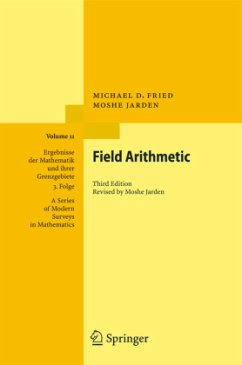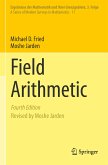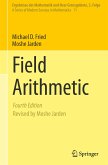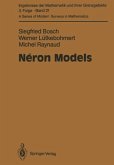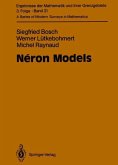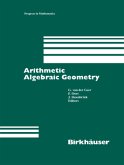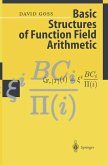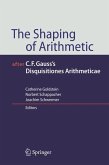Field Arithmetic explores Diophantine fields through their absolute Galois groups. This largely self-contained treatment starts with techniques from algebraic geometry, number theory, and profinite groups. Graduate students can effectively learn generalizations of finite field ideas. We use Haar measure on the absolute Galois group to replace counting arguments. New Chebotarev density variants interpret diophantine properties. Here we have the only complete treatment of Galois stratifications, used by Denef and Loeser, et al, to study Chow motives of Diophantine statements.
Progress from the first edition starts by characterizing the finite-field like P(seudo)A(lgebraically)C(losed) fields. We once believed PAC fields were rare. Now we know they include valuable Galois extensions of the rationals that present its absolute Galois group through known groups. PAC fields have projective absolute Galois group. Those that are Hilbertian are characterized by this group being pro-free. These last decade results are tools for studying fields by their relation to those with projective absolute group. There are still mysterious problems to guide a new generation: Is the solvable closure of the rationals PAC; and do projective Hilbertian fields have pro-free absolute Galois group (includes Shafarevich's conjecture)?
The third edition improves the second edition in two ways: First it removes many typos and mathematical inaccuracies that occur in the second edition (in particular in the references). Secondly, the third edition reports on five open problems (out of thirtyfour open problems of the second edition) that have been partially or fully solved since that edition appeared in 2005.
Progress from the first edition starts by characterizing the finite-field like P(seudo)A(lgebraically)C(losed) fields. We once believed PAC fields were rare. Now we know they include valuable Galois extensions of the rationals that present its absolute Galois group through known groups. PAC fields have projective absolute Galois group. Those that are Hilbertian are characterized by this group being pro-free. These last decade results are tools for studying fields by their relation to those with projective absolute group. There are still mysterious problems to guide a new generation: Is the solvable closure of the rationals PAC; and do projective Hilbertian fields have pro-free absolute Galois group (includes Shafarevich's conjecture)?
The third edition improves the second edition in two ways: First it removes many typos and mathematical inaccuracies that occur in the second edition (in particular in the references). Secondly, the third edition reports on five open problems (out of thirtyfour open problems of the second edition) that have been partially or fully solved since that edition appeared in 2005.
From the reviews of the second edition:
"This second and considerably enlarged edition reflects the progress made in field arithmetic during the past two decades. ... The book also contains very useful introductions to the more general theories used later on ... . the book contains many exercises and historical notes, as well as a comprehensive bibliography on the subject. Finally, there is an updated list of open research problems, and a discussion on the impressive progress made on the corresponding list of problems made in the first edition." (Ido Efrat, Mathematical Reviews, Issue 2005 k)
"The goal of this new edition is to enrich the book with an extensive account of the progress made in this field ... . the book is a very rich survey of results in Field Arithmetic and could be very helpful for specialists. On the other hand, it also contains a large number of results of independent interest, and therefore it is highly recommendable to many others too." (Roberto Dvornicich, Zentralblatt MATH, Vol. 1055, 2005)
From the reviews of the third edition:
"The book give an introduction to the arithmetic of fields that is fairly standard, covering infinite Galois theory, profinite groups, extension of valued fields, algebraic function fields ... and an introduction to affine and projective curves providing a geometric interpretation for results formulated in the language of function fields. ... It could be used a text for graduate students entering the field, since the material is so well organized, even including exercises at the end of every chapter." (Felipe Zaldivar, MAA Online, December, 2008)
"This second and considerably enlarged edition reflects the progress made in field arithmetic during the past two decades. ... The book also contains very useful introductions to the more general theories used later on ... . the book contains many exercises and historical notes, as well as a comprehensive bibliography on the subject. Finally, there is an updated list of open research problems, and a discussion on the impressive progress made on the corresponding list of problems made in the first edition." (Ido Efrat, Mathematical Reviews, Issue 2005 k)
"The goal of this new edition is to enrich the book with an extensive account of the progress made in this field ... . the book is a very rich survey of results in Field Arithmetic and could be very helpful for specialists. On the other hand, it also contains a large number of results of independent interest, and therefore it is highly recommendable to many others too." (Roberto Dvornicich, Zentralblatt MATH, Vol. 1055, 2005)
From the reviews of the third edition:
"The book give an introduction to the arithmetic of fields that is fairly standard, covering infinite Galois theory, profinite groups, extension of valued fields, algebraic function fields ... and an introduction to affine and projective curves providing a geometric interpretation for results formulated in the language of function fields. ... It could be used a text for graduate students entering the field, since the material is so well organized, even including exercises at the end of every chapter." (Felipe Zaldivar, MAA Online, December, 2008)

